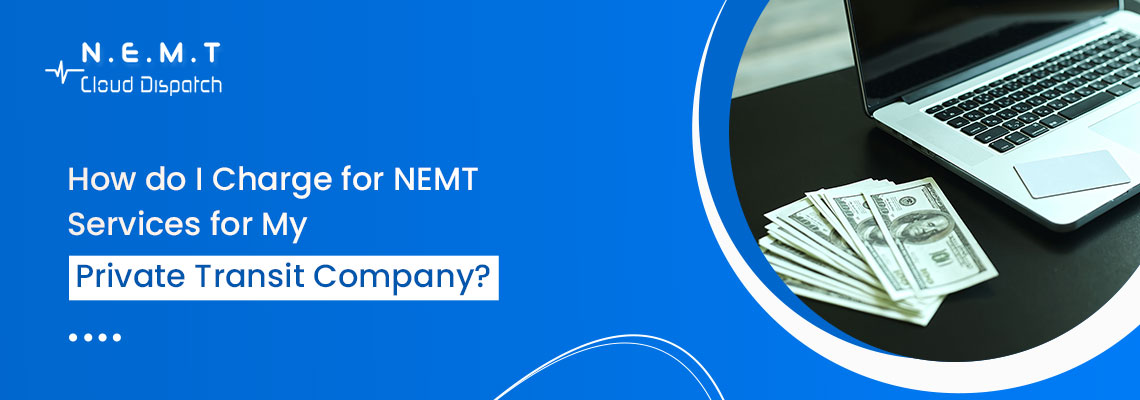Non-Emergency Medical Transportation (NEMT) is a vital service that ensures patients who require regular medical care can access their appointments reliably and safely. For private transit companies providing NEMT, determining a suitable pricing structure is crucial not only for covering operational costs but also for maintaining customer satisfaction and business sustainability. If you’ve ever wondered how to charge for NEMT services for your private transit company, this guide is for you. This article delves into various pricing models, offering a comprehensive approach to help you establish an effective charging strategy for your NEMT services.
Understanding Pricing Structures for NEMT Services
When setting prices for NEMT services, it’s essential to understand the different pricing models available and how they affect both your business and your customers.
Flat Rate Pricing
Flat Pricing is where you charge a fixed fee for a specific route or distance. This approach makes it easy for customers to understand their costs upfront and provides predictability, which can be particularly appealing. However, it may not accurately reflect variations in travel distance or time, potentially leading to undercharging for longer trips or overcharging for shorter ones. For example, a flat fee of $50 might cover a round trip between a patient’s home and a medical facility, regardless of the exact distance traveled.
Mileage-Based Pricing
This involves charging customers based on the number of miles traveled. This model can more accurately reflect the distance covered, making it fairer for longer trips. However, it can also be more complex to calculate and communicate to customers. For instance, if you charge $2 per mile for a 20-mile trip, the total charge would amount to $40. This approach might lead to variable costs that can be challenging for customers to predict.
Hourly Rate Pricing
This kind of pricing sets charges based on the time taken for a trip. This model is particularly useful for trips that involve extended waiting times or delays. It ensures that you are compensated for the time spent, but it can be difficult to estimate costs in advance and may not be suitable for shorter trips. An hourly rate of $30 for a trip that takes 1.5 hours would result in a charge of $45, accounting for both travel and waiting time.
You May Also Read: What Is Wait Time In NEMT And How To Reduce It?
Subscription or Membership Pricing
It involves offering customers the option to pay a regular fee, such as monthly or annually, for a set number of trips or unlimited access to services. This model can provide a steady revenue stream and offer customers predictable costs, potentially at discounted rates. However, it may not be ideal for customers with infrequent needs and requires accurate forecasting of usage patterns. For example, a monthly subscription fee of $200 might cover up to 10 trips, making it an attractive option for frequent users.
Cost-Plus Pricing
This involves setting prices based on the cost of providing the service plus a markup for profit. This model ensures that all operational costs are covered while allowing for profitability. It offers flexibility and adaptability based on changes in costs. However, it requires detailed tracking of operational expenses and may be less transparent to customers. For instance, if the cost to provide a trip is $30 and you apply a 20% markup, the final charge would be $36.
You May Also Read: How To Reduce Cost In NEMT Business?
How To Charge for NEMT Services For Private Transit Company
To effectively charge for NEMT services, start by conducting a thorough analysis of your operational costs. This includes expenses such as vehicle maintenance, fuel, driver wages, and insurance. Understanding these costs will help you establish a baseline for pricing that ensures you cover expenses and achieve profitability.
- Analyze Your Costs
- Understand Your Market
- Choose a Pricing Model
- Communicate Clearly
- Monitor and Adjust
- Offer Discounts or Incentives
Next, conduct market research to understand your local competition and the pricing strategies they employ. This research will provide valuable insights into what customers are willing to pay and help you position your pricing competitively. With this information, you can select a pricing model that aligns with your business objectives and meets the needs of your customers.
Once you’ve chosen a pricing model, ensure that your pricing structure is communicated clearly and transparently to your customers. This involves providing detailed information about how charges are calculated and any additional fees that may apply. Clear communication helps build trust and reduces the likelihood of misunderstandings.
Regularly monitor and adjust your pricing strategy to stay aligned with market trends and changes in operational costs. Be prepared to make adjustments based on factors such as fluctuations in fuel prices or customer feedback.
Additionally, consider offering discounts or incentives, such as referral programs or bundled services, to attract and retain customers.
Conclusion
Charging for NEMT Cloud Dispatch service requires a strategic approach to balance cost coverage, competitiveness, and customer satisfaction. By thoroughly understanding different pricing models and tailoring your pricing strategy to fit your business needs, you can establish a fair and effective pricing structure. Regularly reviewing and adjusting your prices ensures that your NEMT services remain viable and valuable to your customers, supporting the sustainability and growth of your private transit company.


